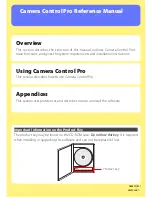
Creating a custom data table
Issue 3.0 May 2002
137
DUPLICATES
Enter
y
if you want to allow the column to contain
the same value in different rows. For example, if the
column were to contain the last names of people,
you would probably want to allow multiple entries
(because, for example, you might have many
different people with the last name of Smith).
However, if you were creating a column of social
security numbers, then you would enter
n
to
prevent multiple entries of the same number.
DUPLICATES
is displayed for all types except
Serial
.
Note: The
DUPLICATES
prompt is displayed if you
answer yes to an
INDEX
prompt.
NULLS
Enter
y
if you want to allow the column to have
rows with no values (versus requiring values). For
example, if your table is a list of customer data and
the column you are adding is for the customer’s
employer, you might want to allow the
NULL
value
for the case where the person is unemployed.
Enter
n
if you want to require a value in each row.
NULLS
is displayed for all types except
Serial.
ADD STARTING
NUMBER
Enter the number that INFORMIX should use as a
starting point for numbering rows. INFORMIX
identifies the first row in the table with the number
you enter. As each new row of data is added to the
table, INFORMIX assigns that row the next number
in the sequence.
ADD STARTING NUMBER
is
displayed only for
Serial
.
NUMERIC
Type the first letter of the numeric you want: Integer,
Smallint, Decimal,
or Float.
LENGTH
Enter the number of digits the column will store for a
single piece of data.
LENGTH
is displayed for
Char
and
Decimal
types
SCALE
Enter the number of digits that should be displayed
to the right of the decimal point. The decimal digits,
but not the decimal point, occupy part of the field
length you specified in the
LENGTH
field.
SCALE
is displayed after the
LENGTH
for
Decimal
.
Prompt
What to Do
















































